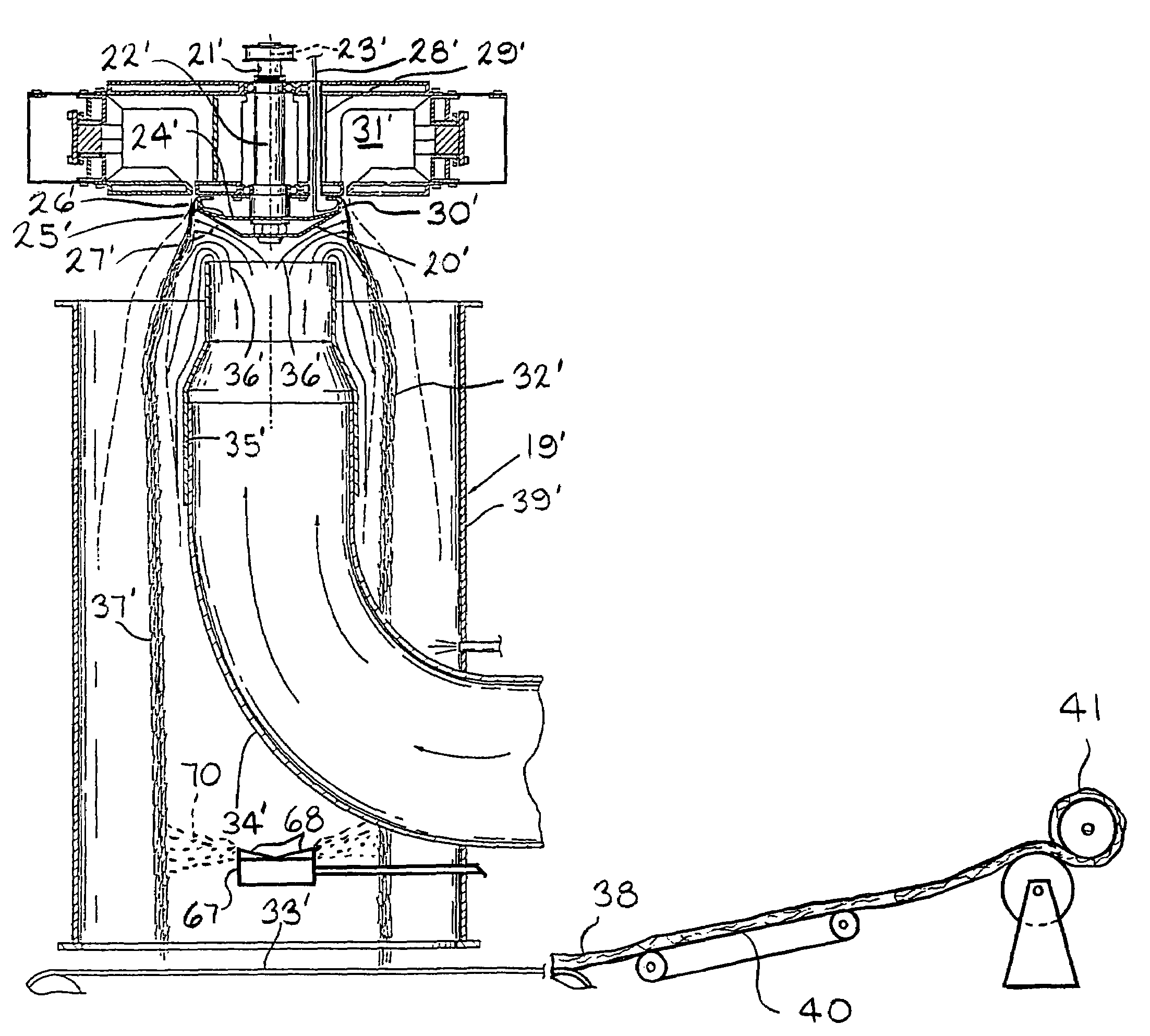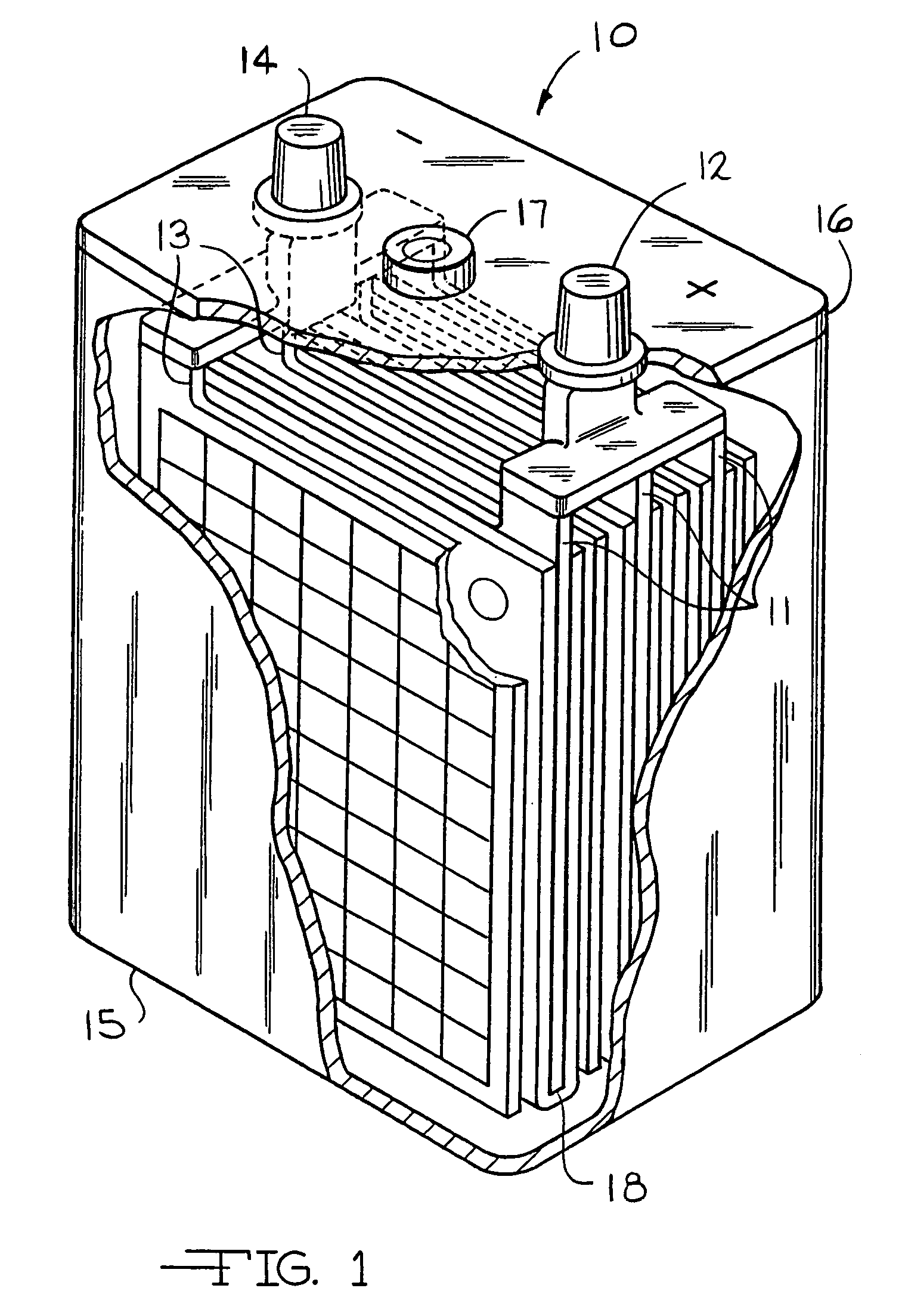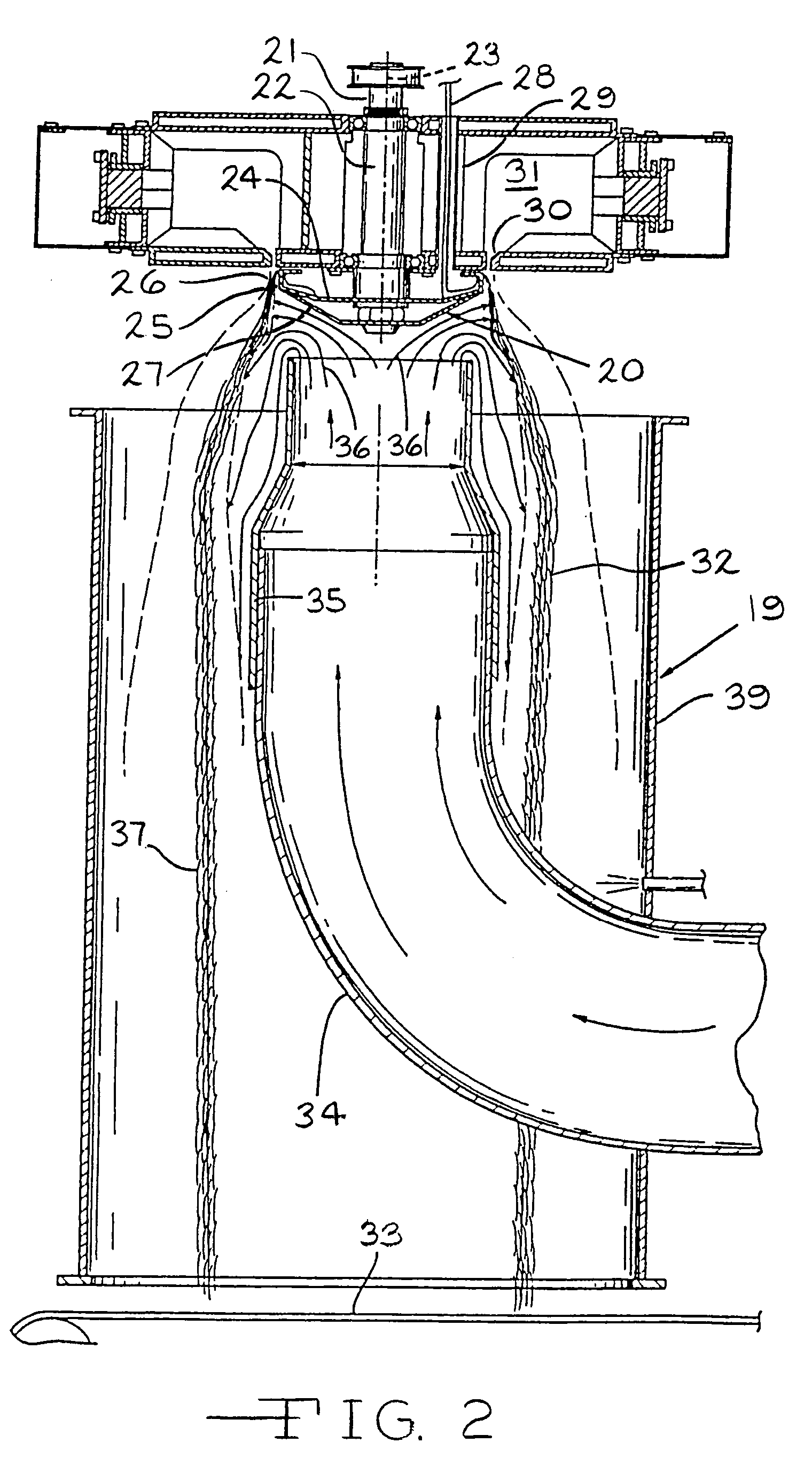Mat of glass and other fibers and method for producing such mat
a technology of glass and other fibers, applied in the field of batteries, can solve the problems of reducing the ability of a separator to wick acid, reducing the amount of acid a separator can hold, and reducing the pressure applied to the assembled element, so as to improve the toughness and wetability, increase the surface area, and improve the effect of drip ra
- Summary
- Abstract
- Description
- Claims
- Application Information
AI Technical Summary
Benefits of technology
Problems solved by technology
Method used
Image
Examples
Embodiment Construction
[0069]A single cell battery according to the invention with a total of 9 plates is indicated generally at 10 in FIG. 1. Except for the identity of the separator material therein, the battery 10 is conventional; the separator can be used in other otherwise conventional batteries. The battery 10 comprises four positive plates 11 which are electrically connected to a positive terminal 12 and five negative plates 13 electrically connected to a negative terminal 14. The plates 11 and 13 are housed within a battery case 15 which is covered by a top 16. There is an opening through a boss 17 on the top 16 of the battery. Separators 18 are composed of sheets of separator material wrapped around the bottom and both major faces of each positive plate 11.
[0070]In a specific example, five, 8A-U1 batteries similar to the batteries 10, but having four negative and four positive plates were produced from separator material composed of glass fibers collected, as the fibers were formed, into a mat we...
PUM
| Property | Measurement | Unit |
|---|---|---|
| diameter | aaaaa | aaaaa |
| length | aaaaa | aaaaa |
| diameters | aaaaa | aaaaa |
Abstract
Description
Claims
Application Information
 Login to View More
Login to View More - R&D
- Intellectual Property
- Life Sciences
- Materials
- Tech Scout
- Unparalleled Data Quality
- Higher Quality Content
- 60% Fewer Hallucinations
Browse by: Latest US Patents, China's latest patents, Technical Efficacy Thesaurus, Application Domain, Technology Topic, Popular Technical Reports.
© 2025 PatSnap. All rights reserved.Legal|Privacy policy|Modern Slavery Act Transparency Statement|Sitemap|About US| Contact US: help@patsnap.com



